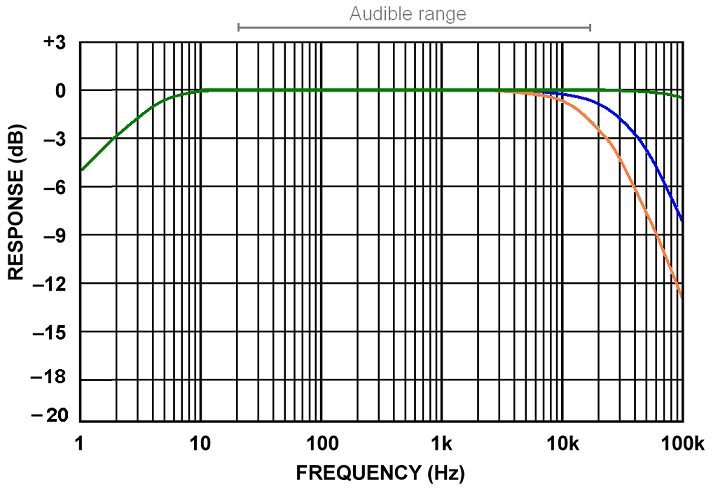Hi there.Indeed this amp is not about measurements. It measures poorly on purpose (except for the channel imbalance).
@maty should love the 2nd and 3rd harm. distortion (which is also level dependent).
This is NOT designed to win any awards in accuracy and super measurements but is designed to flavor sound in various ways (by the customer using jumpers) and to drive all headphones under all conditions.
Yes, that's the idea. For normal listening levels it should sound 'normal with a hint of tube flavor'.
Those that don't want this should buy other amps... this will not be for them.
A feature that hasn't been tested is the output resistance which can be set to 0.1 Ohm (at least that's what I measured), 35 Ohm and 120 Ohm (an old standard) so also headphones that are designed for high output Z can be used.
The 50mW will measure poorly but for this we have a solution (way way too much power for IEM as well) in the form of a passive attenuator.
View attachment 33516
With it you can add almost 15dB to the SINAD number of 50mV measurement.
It can also be used to get a bit less channel imbalance this way with sensitive headphones.
The channel imbalance is because of the high gain and pots.
From what the seller (Jeremy of G1217) told me he buys the pots in large and hand matches them and throws out the ones that measure even poorer.
The channel imbalance of the tube designs is even worse as that is determined by the tubes entirely (no overall feedback).
Jeremy (G1217) wanted me to design a SS amp that has the same properties as a tube amp (harmonic dist).
So distortion pattern and deliberate roll-off (the middle setting is intended to kind-of mimic the roll-off from R2R DACs and the severely roll-off response is because Jeremy liked it this way with some 'shrill' headphones.
The intention for owners is to play around with all settings to get the 'sound' they want.
There aren't many amps around that let you do this as an owner. One usually gets one flavor only and there already are so many 'normal' amps around.
The tested version seems to have the 'aggressive filter' options (preferred by Jeremy). This amp can also be ordered with more conservative bandwidth settings (as I designed it) when ordering.

In wide BW setting the measured FR is 8Hz - 35kHz (-0.5dB) = 2Hz - 100kHz (-3dB) with a 32 Ohm load.
It is also available with metal top and bottom plate. Jeremy likes to see the parts, I like fully closed metal enclosures but this is too 'plain' for Jeremy. His show
View attachment 33519
I would like to mention I am not part of G1217 nor do I make money of it.
I just design it for a friend (Jeremy) on his request and help him with the layout a bit.
I do service them for EU customers but do not sell nor represent G1217.
Oh ... for the nerds.... the schematics
I have scored a Project Polaris, second hand from Canuck Audiomart for a reasonable €251 in total, including Customs fees. In excellent condition and with a few extra Resistors and LEDs. I would like to share my experience with it, including setting up.
I have figured out, eventually, where the jumpers would go, with the exception of the Power Led, which I have only realised it was missing after turning on the Unit. In fact, I thought there was something wrong with it at first. I went back to the Manual and it became evident what that sole remaining jumper was for. Silly me!
I would prefer the LED to be RED, as I generally find Blue Leads too bright for my taste. But I saw that Trim Pot close to it and have realised that it could be usefully dimmed. I have set it to lowest brightness. I will eventually change the LED for a RED one, which the seller has also included.
As for the attenuation module, I have simply set it as Off, even though the labelling isn't too clear. I have figured out that WO probably meant Without Attenuation. And I was thankfully right.
I have set Bandwidth to High, to keep the output as extended and neutral as possible and Gain to High as well. As for Output Impedance, I have set it as Low, to ensure the widest compatibility, as well as raw power output. And by golly, is it Powerful! Even with a relatively hard to to drive Vintage DT990/600 Ohm (1985) I have power to spare and then some! I may try the Medium Gain and see if it is adequate for these and other vintage pairs in my collection. I have to say that I like to listen loud, and my ageing ears are probably contributing to that preference.
EDIT: Medium Gain proved to be plentiful for even hard to drive Vintage High Z and HIFIMAN Planar Magnetics. Very impressive indeed!
As for the Sound, it is indeed VERY good, meaty, punchy, yet still providing perfectly adequate levels of detail. I was pleasantly surprised that I couldn't ear the supposedly high levels of distortion published by Armin here. I don't doubt what he has measured, but it does not appear to be audible. Which is a big plus for me. And it pairs especially well with High Impedance, Vintage Sennheiser and Beyerdynamic!
I have other amps, with which I'm more than happy with, but for now at least the Polaris is a rather nice alternative to the others, providing a somewhat less clinical, less technically orientated performance, but very strong on Musical satisfaction. And that is the most important factor, all things considered...
Last edited:
